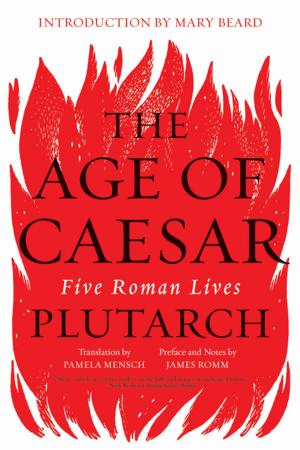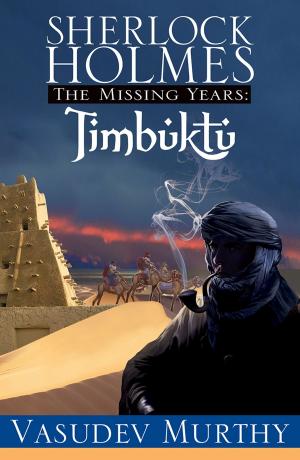| Author: | John Macgregor | ISBN: | 9781301702114 |
| Publisher: | John Macgregor | Publication: | June 15, 2013 |
| Imprint: | Smashwords Edition | Language: | English |
| Author: | John Macgregor |
| ISBN: | 9781301702114 |
| Publisher: | John Macgregor |
| Publication: | June 15, 2013 |
| Imprint: | Smashwords Edition |
| Language: | English |
Despite the extraordinary plot parallels between these two detective mystical conspiracy thrillers, before sitting down to write The Da Vinci Code Dan Brown likely didn't read the more literary Propinquity (published 1986) - for hardly anyone has read it. Thanks to a crash-and-burn by its publisher that same year, Propinquity is a collector's item.
The Da Vinci Code was dissed by heavyweight reviewers, but sold 80 million copies. The critics were lavish with Propinquity - comparing the then youthful John Macgregor with some of the world greats. Propinquity sold (count 'em) 600 copies.
Nonetheless, the story coincidences are startling:
At the center of Propinquity is the secret tomb of a medieval French princess - carrier of the same gnostic illumination dispensed by Christ. The tomb, deep under Westminster Abbey, contains documents on the life of this female avatar, and gnostic scrolls speaking of a feminine divine power. A male doctor is led into this mystery by a young woman - a medievalist, fluent in Old French. She knows the crypt's location because, as a child, she'd witnessed her father visiting it - he being a high-ranking cleric set on keeping the secret secret.
Like The Da Vinci Code, Propinquity has a 2,000-year timeline - so even the backstory has a backstory:
In the first century, Joseph of Arimathea had brought the Holy Grail to England - and set up a monastery where Westminster Abbey now stands. The Roman state later appropriated Christianity, and redesigned it in its own image. But the Westminster monks acted as a secret society which kept the gnostic teaching alive. After twelve centuries, into their midst walked Berengaria, Richard the Lionheart's Queen - herself a gnostic.
Berengaria was presently done away with by the Church's male power structure. For centuries it kept her tomb, and history, secret: if word got out, "Christianity would come down like Wall Street in the Great Crash". But now our heroic couple - the Church hierarchy and police on their tails - are in a race to reveal all.
Sounding familiar so far?
The difference is that The Da Vinci Code is a best-seller, whilst Propinquity - also quite a page-turner (see Chapter 13's ritual sex among the tombs at the heart of Christendom) - is more literary and exploratory. It begins with a few fun chapters looking at the hero's early life, before switching to a tauter pace and getting down to the mystery, which takes us to London, Oxford, Haiti and the Australian bush. This builds familiarity with the characters, but it's not out of your usual how-to-write-a-pot-boiler manual.
Notwithstanding the 1:133,000 sales ratio, Propinquity did something The Da Vinci Code never did: it won a major literary prize. That would be the 1986 Adelaide Festival Biennial Award for Literature. It was also shortlisted for The Age Book of the Year that year - but was beaten out by Robert Hughes' The Fatal Shore.
Macgregor went on to a journalism career, writing for the New York Times, and winning a major investigative journalism award for unravelling a real-life conspiracy by the FBI. He has been generous about Dan Brown's book, saying, "The Da Vinci Code is a nicely constructed novel. Sometimes critics don't realise how hard good structure is." Propinquity contains more elegant language than Brown seems capable of; the plot and pacing are less even than those of The Da Vinci Code.
However Propinquity contains one plot twist unthought-of by Brown: Our modern heroic couple discover that the entombed queen may not actually be dead, but in a centuries-long coma induced by herbs. So there is a thrilling quest (spanning several continents) to find the antidote, lost to science for centuries, and bring her back to life...to watch those blue, medieval Saxon eyes open, to behold the modern world. And perhaps change it irrevocably.
I won't spoil the plot... But I'm glad John Macgregor has decided to unearth Propinquity from its crypt after so many years.
Despite the extraordinary plot parallels between these two detective mystical conspiracy thrillers, before sitting down to write The Da Vinci Code Dan Brown likely didn't read the more literary Propinquity (published 1986) - for hardly anyone has read it. Thanks to a crash-and-burn by its publisher that same year, Propinquity is a collector's item.
The Da Vinci Code was dissed by heavyweight reviewers, but sold 80 million copies. The critics were lavish with Propinquity - comparing the then youthful John Macgregor with some of the world greats. Propinquity sold (count 'em) 600 copies.
Nonetheless, the story coincidences are startling:
At the center of Propinquity is the secret tomb of a medieval French princess - carrier of the same gnostic illumination dispensed by Christ. The tomb, deep under Westminster Abbey, contains documents on the life of this female avatar, and gnostic scrolls speaking of a feminine divine power. A male doctor is led into this mystery by a young woman - a medievalist, fluent in Old French. She knows the crypt's location because, as a child, she'd witnessed her father visiting it - he being a high-ranking cleric set on keeping the secret secret.
Like The Da Vinci Code, Propinquity has a 2,000-year timeline - so even the backstory has a backstory:
In the first century, Joseph of Arimathea had brought the Holy Grail to England - and set up a monastery where Westminster Abbey now stands. The Roman state later appropriated Christianity, and redesigned it in its own image. But the Westminster monks acted as a secret society which kept the gnostic teaching alive. After twelve centuries, into their midst walked Berengaria, Richard the Lionheart's Queen - herself a gnostic.
Berengaria was presently done away with by the Church's male power structure. For centuries it kept her tomb, and history, secret: if word got out, "Christianity would come down like Wall Street in the Great Crash". But now our heroic couple - the Church hierarchy and police on their tails - are in a race to reveal all.
Sounding familiar so far?
The difference is that The Da Vinci Code is a best-seller, whilst Propinquity - also quite a page-turner (see Chapter 13's ritual sex among the tombs at the heart of Christendom) - is more literary and exploratory. It begins with a few fun chapters looking at the hero's early life, before switching to a tauter pace and getting down to the mystery, which takes us to London, Oxford, Haiti and the Australian bush. This builds familiarity with the characters, but it's not out of your usual how-to-write-a-pot-boiler manual.
Notwithstanding the 1:133,000 sales ratio, Propinquity did something The Da Vinci Code never did: it won a major literary prize. That would be the 1986 Adelaide Festival Biennial Award for Literature. It was also shortlisted for The Age Book of the Year that year - but was beaten out by Robert Hughes' The Fatal Shore.
Macgregor went on to a journalism career, writing for the New York Times, and winning a major investigative journalism award for unravelling a real-life conspiracy by the FBI. He has been generous about Dan Brown's book, saying, "The Da Vinci Code is a nicely constructed novel. Sometimes critics don't realise how hard good structure is." Propinquity contains more elegant language than Brown seems capable of; the plot and pacing are less even than those of The Da Vinci Code.
However Propinquity contains one plot twist unthought-of by Brown: Our modern heroic couple discover that the entombed queen may not actually be dead, but in a centuries-long coma induced by herbs. So there is a thrilling quest (spanning several continents) to find the antidote, lost to science for centuries, and bring her back to life...to watch those blue, medieval Saxon eyes open, to behold the modern world. And perhaps change it irrevocably.
I won't spoil the plot... But I'm glad John Macgregor has decided to unearth Propinquity from its crypt after so many years.















